The Next 100 Years: BMW celebrates centenary with trio of concept cars
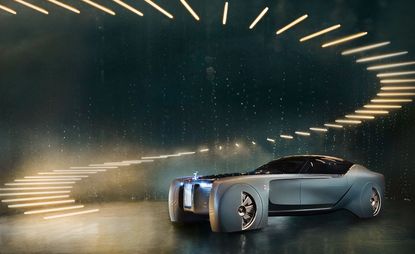
Most big corporations have a department dedicated to crystal ball gazing, but only the auto industry translates that fevered speculation into physical form in the shape of concept cars. To celebrate its centenary, the BMW Group has created a triumvirate of concepts, starting in March with the BMW Vision Next 100 and continuing this month with two new concepts from each of its sister brands, MINI and Rolls-Royce. All three are on display in London's Roundhouse before heading off on a 'centenary world tour,' travelling from London to Beijing and Los Angeles.
So how does a car company that thrives on qualities like driving dynamism and brand desirability head into the post-car era? BMW's answer is to take control of the conversation and reframe it so that it controls the narrative: 'the best way to predict the future is to shape it,' a gravelly voice intones over a glossy introductory film.
The Vision series is blue-sky thinking filtered through three very particular brand lenses. BMW as a whole is making high profile but relatively small inroads into things like car sharing and energy services, but as the company sells a record 2.2 million vehicles worldwide across its brands it's hardly looking to disrupt the auto industry any time soon.
Even so, the Vision series is about repositioning BMW as an 'individual mobility company,' albeit one that is still manifested in physical product that can be desired and bought. Along the way, the company expects that technologies like artificial intelligence and autonomous driving will slip into everyday use without compromising the driver involvement that defines the 'ultimate driving machine.'
In amongst the blizzard of buzz phrases (‘mobility is becoming tailor made,' 'connectivity is becoming second nature,' 'mobility is becoming versatile,’ 'technology is becoming human') we are shown two rather extraordinary cars. First up is the MINI, a four-square, smooth-sided city car that reduces the classic brand signatures to simple geometric elements – the twin round lights, for example – and instead focuses on connectivity and emotional engagement. Anders Warming, head of MINI design, explains that although this is a car that’s still fun to drive, it’s also about maximising interior space and social engagement.
MINI’s vision is pitched at those whose lives have been shaped by a lifetime on social media. Essentially, the car changes its configuration according to the character of the user, with profiles that live in the cloud and can be swapped into car shares or hires around the world. 'The car becomes a vehicle for inspiration,' says Warming, adding that the car is seen as 'an architectural space that you can use to go from A to B – can a car still be fun if you're still stuck in traffic?'
The glass front end and central ‘Cooperiser’ illustrate how much the brand likes to lean on its heritage, with patination-friendly materials like brass used to give the car a sense of value over time, while screens embedded on the doors and a front-mounted projector turn the car into a mobile emoji creator. 'MINI is a friend already,' Warming says, explaining that emerging generations will be less hung up on owning physical things if they can still access their services, friends and information and be welcomed by a car that knows just what it likes.
Rolls-Royce has taken this idea far, far upmarket. The '103EX' is the first-ever speculative concept car from Rolls-Royce and embodies three key themes: 'grand sanctuary,' 'effortless journey,' and 'grand arrival.' Whereas the MINI looked just a few generations ahead, there’ll need to be bold technological leaps before Rolls-Royce’s fully autonomous plutocratic people carrier becomes reality.
For now, the key takeaways are the proportions. The mammoth 2m bonnet is a clear reference to the company’s grandest cars of the 30s, while the sheathed wheels and teardrop-shaped passenger compartment has the kind of retro-futurist allure that emerged at the start of the space age. At nearly 6m long it’s a surprise to find this car caters for only two, with a sumptuous silk sofa and a 'grand arrival' sequence that opens up the passenger compartment and rolls out a virtual red carpet, allowing for a graceful step down into the flashbulbs (and no opportunity for vulgar paparazzi snaps).
Perhaps most importantly of all, Rolls-Royce has retired the traditional chauffeur altogether, speculating that artificial intelligence and autonomous driving will do a far better job. This car is a 'she', a super informed Siri-esque companion that is driver, concierge, search engine, sommelier, personal shopper, butler, maid and stockbroker rolled into one vast mechanised whole.
'It's unapologetically big,' admits Rolls-Royce’s design director, Giles Taylor, 'although we're moving away from the monolithic approach.' These forms might not telegraph the imminent next generation of Rolls-Royces, but Taylor is still gleeful at the freedom of the brief. 'It’s automotive haute couture,' he enthuses, 'I was keen to make a strong style statement – it's where we'll be going in the future, a celebration of style and presence and the people who own them.'
No doubt certain customers will demand the company deliver this exact car tomorrow, regardless of whether or not it actually worked. It makes perfect sense for BMW, MINI and Rolls-Royce to fly the flag for their respective brand values and shape a future narrative that plays to their respective strengths. But for once these conceptual visions are exactly that – informed speculation about a world that’s still a few decades away. At least, that’s what BMW hopes.
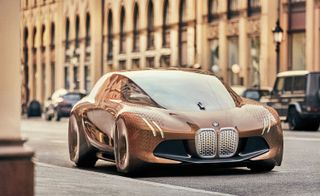
The Vision series is about repositioning BMW as an 'individual mobility company,' albeit one that is still manifested in physical products that can be desired and bought
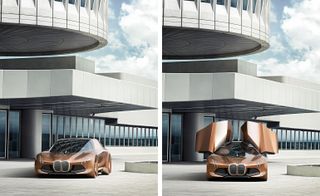
The company expects that technologies like artificial intelligence and autonomous driving will slip into everyday use without compromising the driver involvement that defines the 'ultimate driving machine'
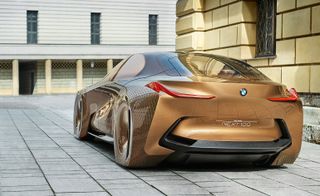
BMW Group's new models represent their company idea that 'the best way to predict the future is to shape it'

First up is the MINI, a four-square, smooth-sided city car that reduces the classic brand signatures to simple geometric elements and instead focuses on connectivity and emotional engagement
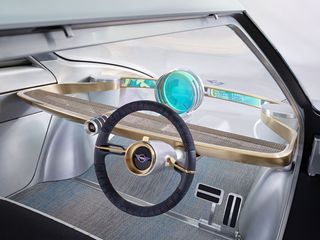
MINI’s vision is pitched at those whose lives have been shaped by a lifetime on social media – the car changes its configuration according to the character of the user, with profiles that live in the cloud and can be swapped into car shares or hires around the world
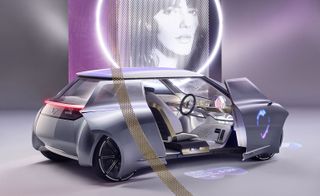
The glass front end and central ‘Cooperiser’ illustrate how much the brand likes to lean on its heritage, with patination-friendly materials like brass used to give the car a sense of value over time, with screens embedded on the doors and a front-mounted projector
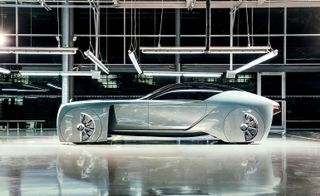
Rolls-Royce has taken this idea far, far upmarket with the new model '103EX' as the first-ever speculative concept car from the brand embodying three key themes: 'grand sanctuary,' 'effortless journey,' and 'grand arrival'

The mammoth 2m bonnet is a clear reference to the company’s grandest cars of the 30s, while the sheathed wheels and teardrop-shaped passenger compartment has the kind of retro-futurist allure that emerged at the start of the space age

The car's design includes a 'grand arrival' sequence that opens up the passenger compartment and rolls out a virtual red carpet...

...and a sumptuous silk sofa with seating for two
INFORMATION
To find out more about The Next 100 Years, visit BMW’s website
Wallpaper* Newsletter
Receive our daily digest of inspiration, escapism and design stories from around the world direct to your inbox
Jonathan Bell has written for Wallpaper* magazine since 1999, covering everything from architecture and transport design to books, tech and graphic design. He is now the magazine’s Transport and Technology Editor. Jonathan has written and edited 15 books, including Concept Car Design, 21st Century House, and The New Modern House. He is also the host of Wallpaper’s first podcast.
-
 VitrA’s recycled washbasin is a world first
VitrA’s recycled washbasin is a world firstVitrA reveals its recycled ceramic washbasin, made using almost 100 per cent waste materials from the bathroom company’s own production process
By Simon Mills Published
-
 Serenade your senses at Farasha Farmhouse in Marrakech
Serenade your senses at Farasha Farmhouse in MarrakechFarasha Farmhouse is a serene escape hidden on the outer reaches of Marrakech
By Nicola Chilton Published
-
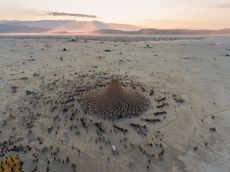 ‘Bio-spaces’ exhibition at Roca London Gallery celebrates biophilic design
‘Bio-spaces’ exhibition at Roca London Gallery celebrates biophilic design‘Bio-Spaces: regenerative, resilient futures’ opens at the Roca London Gallery as ‘a call to action to stop designing nature out’
By Clare Dowdy Published
-
 BMW Vision Neue Klasse X reveals the shape of tomorrow’s electric SUV
BMW Vision Neue Klasse X reveals the shape of tomorrow’s electric SUVNew concept the BMW Vision Neue Klasse X previews the next-generation ‘X’ models
By Jonathan Bell Published
-
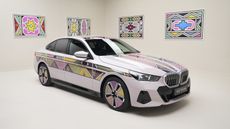 BMW i5 Flow NOSTOKANA brings Esther Mahlangu’s art to life at Frieze LA
BMW i5 Flow NOSTOKANA brings Esther Mahlangu’s art to life at Frieze LABMW’s Art Car Project has rarely impacted on the company’s everyday business of building cars. With the BMW i5 Flow NOSTOKANA, could all that be about to change?
By Jonathan Bell Published
-
 Electric BMW CE 02 is an eParkourer for the urban jungle
Electric BMW CE 02 is an eParkourer for the urban jungleThe BMW CE 02 – BMW Motorrad’s second all-electric scooter –is aimed squarely at the urban rider, offering style and power in a bold new package
By George Chapman Published
-
 CES 2024 was a showcase for how to shoehorn AI into next-generation cars
CES 2024 was a showcase for how to shoehorn AI into next-generation carsCES 2024 in Las Vegas underlined that future mobility will be shaped by AI, like it or not, as intelligent assistants emerge to guide, plan and converse with their human cargo
By Jonathan Bell Published
-
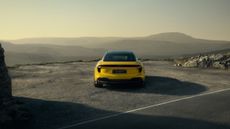 24 transportation design innovations for 2024
24 transportation design innovations for 2024From electric cars to new airports and sports boats, here’s a non-exhaustive list of 24 of the most interesting transportation design innovations to expect in the coming year
By Jonathan Bell Published
-
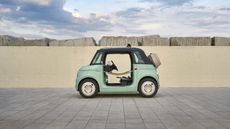 Year in review: top 10 transport design stories of 2023, selected by Wallpaper’s Jonathan Bell
Year in review: top 10 transport design stories of 2023, selected by Wallpaper’s Jonathan BellJonathan Bell’s top 10 transport design stories of 2023 span from electric campers and microcars to flying yachts and classic car recreations
By Jonathan Bell Published
-
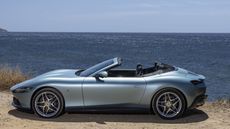 Year in review: the top 10 cars of 2023, as selected by Wallpaper’s Jonathan Bell
Year in review: the top 10 cars of 2023, as selected by Wallpaper’s Jonathan BellWhat were the best four-wheeled offerings of 2023? Transport editor Jonathan Bell takes us through the year’s most intriguing automobiles
By Jonathan Bell Published
-
 80 years of BMW design in a monumental new book
80 years of BMW design in a monumental new book‘BMW: Behind the Scenes’ is billed as the ultimate book on the Bavarian carmaker’s aesthetic history
By Jonathan Bell Published